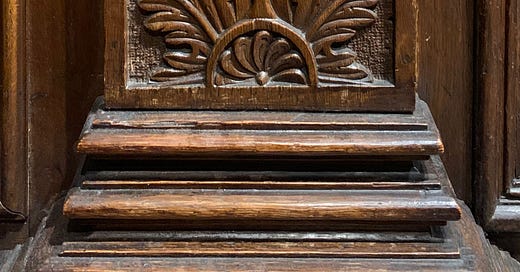One of the reasons I'm not a fan of applied ornament on furniture is that it's lost its meaning during the last few centuries. To be certain, some ornament is just gilding the lily, filling in blank spaces to delight or dazzle (or even disgust) the viewer.
But a lot of ornament, especially the early stuff, transmitted deliberate and uncoded messages to the viewer. Many times the ornament told a story. Or it reminded people of something important. Or it put the viewer in his or her place in the world.
This sort of ornament or symbology was supposed to work hand in hand with the overall form of the piece of furniture (or building) to create a harmonious whole.
The problem is that we lost the code book.
Let's look at a couple examples that (I hope) will illustrate our modern collective ignorance. Before we start, know that I hate quizzes. So I'm not trying to make you feel stupid with the fol…
Keep reading with a 7-day free trial
Subscribe to The American Peasant to keep reading this post and get 7 days of free access to the full post archives.




